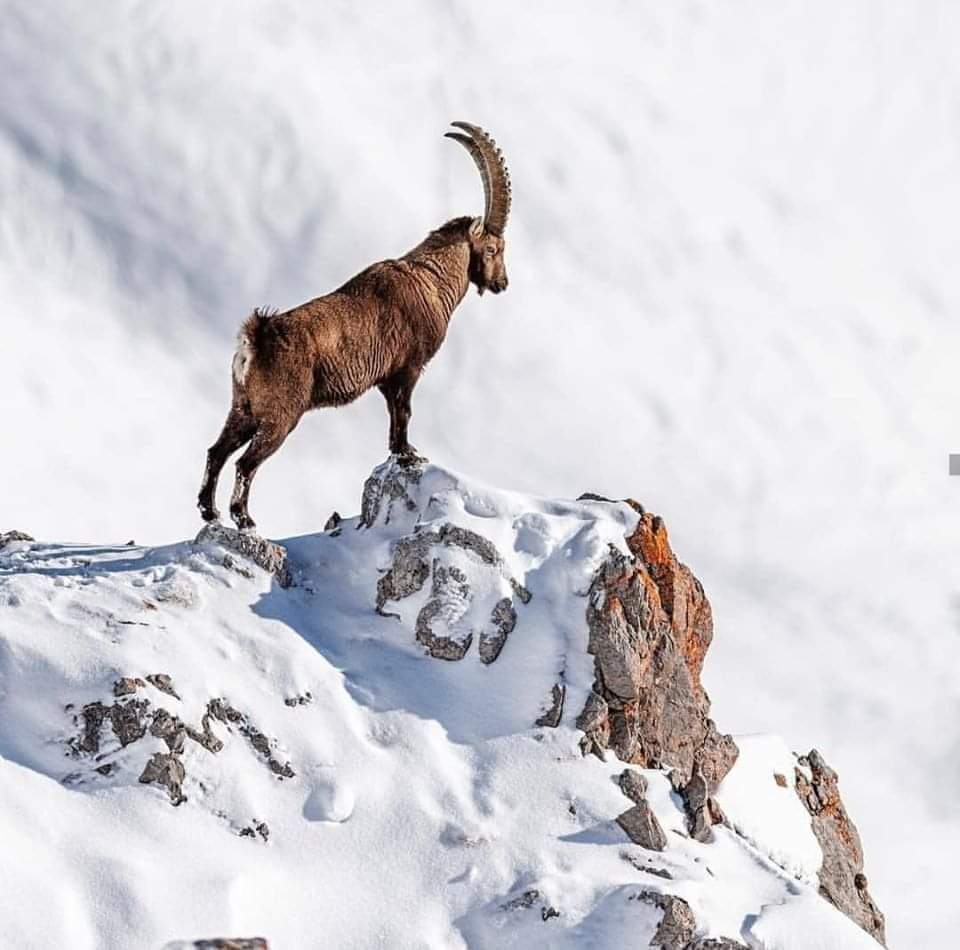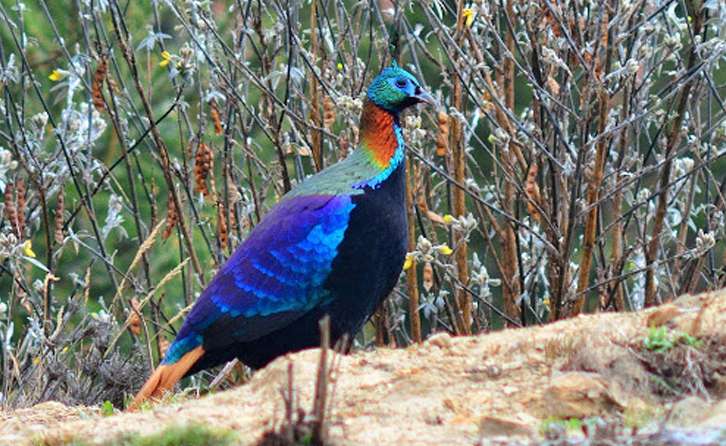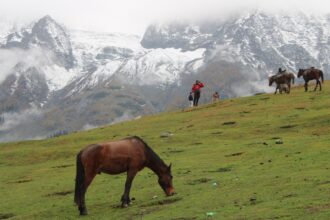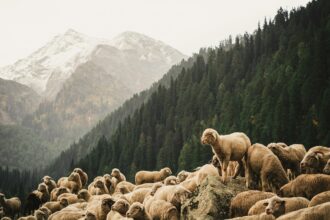Markhor (Capra falconeri) , Article by (Danish Hussain Shah)
Markhor is the largest mountain goat in the world, found in the Himalayan Mountain Range around or above the tree line. They range across northern India, Pakistan, Afghanistan and Turkemistan.

It is listed on the IUCN Red List as Near Threatened since 2015.
In India Markhors are only found in Jammu and Kashmir. Especially in Pir Panjal Range spread in Parts of ( Poonch, Rajouri, Baramulla, Shopian, Kulgam and Budgam)
Danish Hussain Shah
Mostly the markhor is restricted to two areas in Jammu and Kashmir: the Kajinag National Park in Baramulla district and the Hirpora Wildlife Sanctuary in Shopian district .
Conserving of the markhor
From October 2004 to April 2005, the Wildlife Trust of India (WTI) conducted the first range-wide survey of the species in India since Independence. It found that the markhor’s range has shrunk from c. 300 km2 in the late 1940s to c. 120 km2 in 2004–2005, says a study published in 2009. WTI is currently engaging with local communities and migratory herders to reduce the pressure on grazing lands and increase awareness about the markhor. The work is being done in collaboration with the Jammu and Kashmir wildlife department.
Threats at large
Poaching and overgrazing, besides insurgency, are threatening the markhor. To reduce grazing, most protected areas have been declared as no-grazing zones for non-traditional herders through patrolling which ensures entry only for registered herders. “Many herders try to sneak in, which can affect the species’ population. The wildlife department is trying to prevent poaching and spread awareness by involving local communities.
The Indian Army, which is also an important stakeholder in markhor conservation, is being sensitised through workshops and presentations.The markhor population is quite stable in Kajinag where there are about 250 individuals. In Hirpora, dominated by alpine and sub-alpine habitats, several sites have been mapped as critical markhor areas and efforts are on to release these areas from livestock pressure and disturbance caused due to the presence of herders and their settlements. Consultations with herders are on to motivate them not to bring the livestock of non-bonafide herders in these sites. But moving the bonafide herders out is still a challenge because they generally use their assigned pastures which they have been using for years. Some, who have got jobs, rent out their pastures to non-bonafide herders to earn money and retain a sort of ownership. These non-traditional herding practices have more than doubled the livestock numbers.
How Markhor Population decreasing from J&K?
There are two main reasons behind this.
1. Hunting of Markhors by Local Hunters. During winter season when the peoples from upper reaches returned back towards their homes with their livestock after spending there some months, the local hunters visit in these areas for hunting and uses the sheds of Migrated peoples as a shelters. They mostly hunts the Kashmiri musk deer, Wild cocks, Himalyan Monal etc. But in some cases they also hunt the Markhor if they sighted it. It is difficult to reach at Markhor dominated areas due to heavy snow & Harsh Weather conditions but some hunters succeed to achieve the location. The Jammu and Kashmir Wildlife department had took many initiatives to tackle the hunters and many of them got arrested every year.It is our responsibility to save them by sharing the details of such hunters with concerned department as we get.

The Markhor Population in J&K restricts to few hundreds from Thousands.If such type of hunting and pouching continues for few years in J&K, it will extinct the Markhor from India.
Danish Hussain Shah
2. Fencing along the LOC. Fencing along the LOC also play a role in Markhor Population decreasing case. As we know the Pir Panjal range extends beyond the LoC. It has been observed that many of Markhors cross the border in last few decades and enter in PoK territory. Few of them returned back but most of them failed to cross the fencing and later dominates in PoK territory.
How to prevent Markhor from extinction?
1. Inform such unusual activities to concerned Wildlife department, Police or Indian Army quickly.
2. Organise an awareness program on Markhors in Schools, colleges and other public places.
3. Try not to interfere in Markhor dominated areas.
…..Thanks for Reading the article…..








